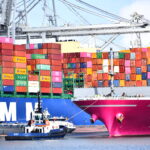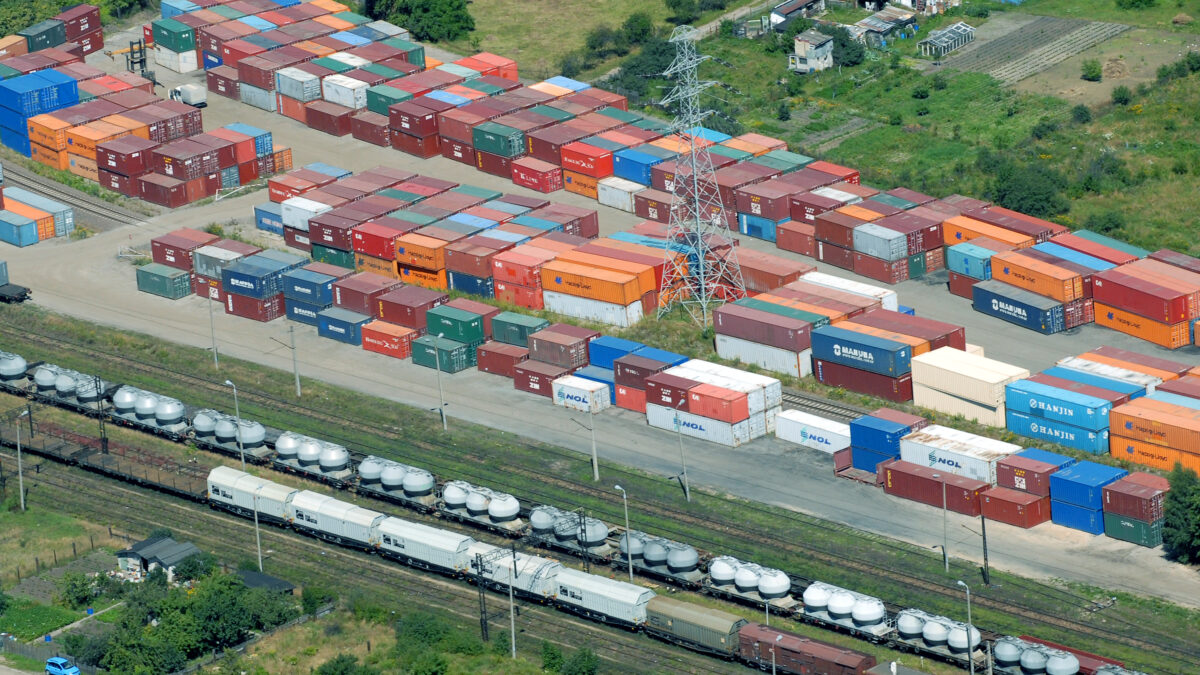
Poland as the leader in offshore wind?
29 August 2024
Step in the right direction
29 August 2024Following the satisfying results of intermodal transport in Poland between 2012 and 2022, when the volume of transported containers rose to 2.9 million TEUs, freight work rose from 3 billion tkm to 8.6 billion tkm, and cargo weight increased from 8 million t to 26.2 million t in that 10-year period, the trend was expected to continue in 2023. These hopes, however, proved to be faint. According to figures from the Railway Transport Office (UTK), only 2.43 million TEUs were transported last year, down as much as 14.3%. The volume of cargo transported amounted to 24.5 million tons, down 6% from the previous year, and the freight work performed was 8.5 billion tkm, down 1.5%.
– The deceleration in intermodal freight growth is still affected by the uncertain situation across the Eastern border caused by Russia’s aggression against Ukraine – according to UTK’s comment on the results.
In the Office’s opinion, the situation calls for developing new directions in the transport of intermodal cargo. The declines in intermodal transport parameters recorded last year should drive the implementation of recommendations for a new system of support for intermodal transport, developed by UTK, together with the Ministry of Infrastructure and PKP Polskie Linie Kolejowe. They are presented in the document “Intermodal Transport Development Directions to 2023 with an Outlook to 2040”. The document primarily calls for increased relief for high-speed intermodal trains. In 2 years, intermodal subsidies would reach PLN 50.7 million. According to the Ministry of Infrastructure, these subsidies amounted to PLN 42.2 million in 2021, and nearly PLN 44 million in the next year. This year, they will decrease to PLN 42.7 million. The sum of PLN 50 million will be exceeded in 2025. The ministry plans that intermodal subsidies will rise to PLN 58.4 million in 2028. PKP PLK has presented forecasts for 2024-2028 of subsidies for intermodal transport (so-called intermodal relief trains), which are expected to total PLN 266.3 million. The relief for intermodal trains is up to 25% of the rail access fee.
Increased relief for intermodal trains could provide important support for carriers in the coming years. However, it will turn out to be important whether the recommendations contained in the aforementioned document outlining the directions of intermodal transport development until 2040, which was still adopted by the previous government, will be implemented by the new authorities, and to what extent. The Polish intermodal sector will also have to adapt its activities to the directive currently being prepared by the European Commission updating intermodal transport. According to this document, intermodal transport is defined as a type of multimodal freight transport in which goods are transported in an enclosed cargo unit, such as a container, swap body or semi-trailer, and this unit is transshipped between different modes of transport without handling the goods themselves.
Combined transport, on the other hand, is a type of intermodal transport that meets strict criteria, i.e. it involves operations that reduce negative externalities by 40% compared to road-only operations. For a transport service to be considered combined transport, the bulk of the transport operation must be carried out by rail, sea or inland waterways. On the other hand, the sections of the so-called first and last mile covered by trucks must be much shorter than the transports between intermodal terminals.
The directive also assumes that intermodal transport, like unimodal transport, will be free of permits and quotas. It requires member states to adopt a “national policy framework to facilitate the use of intermodal transport”. The draft legislation introduced two forms of support for the development of combined transport. First, in order to better utilize the capacity of intermodal terminals throughout the European Union, there will be an exemption from driving bans on weekends, holidays and at night for road carriers carrying short distances between terminals and destination customers. Second, member states will be required to implement transport policies that will reduce the average cost of door-to-door combined transport operations by at least 10% within seven years.
On a positive note, for a generally not-so-good intermodal transport year 2023, terminal investments turned out to be a positive. Expansion of existing facilities and construction of new ones has gained long-awaited momentum. According to the latest UTK data, there were 35 terminals at the end of last year, four fewer than in 2021. Their total annual transshipment capacity of all 4 offshore and 31 onshore terminals amounted to 8.7 million TEUs. The so-called saturation rate for this infrastructure – 1.41 per 10,000 square kilometers – places Poland within the modest European average. Data presented by PKP Cargo Connect shows that it is 2.04 for Sweden, 2.7 for the Czech Republic, 2.47 for Hungary, 4.82 for the Netherlands, and 5.98 for Germany.





